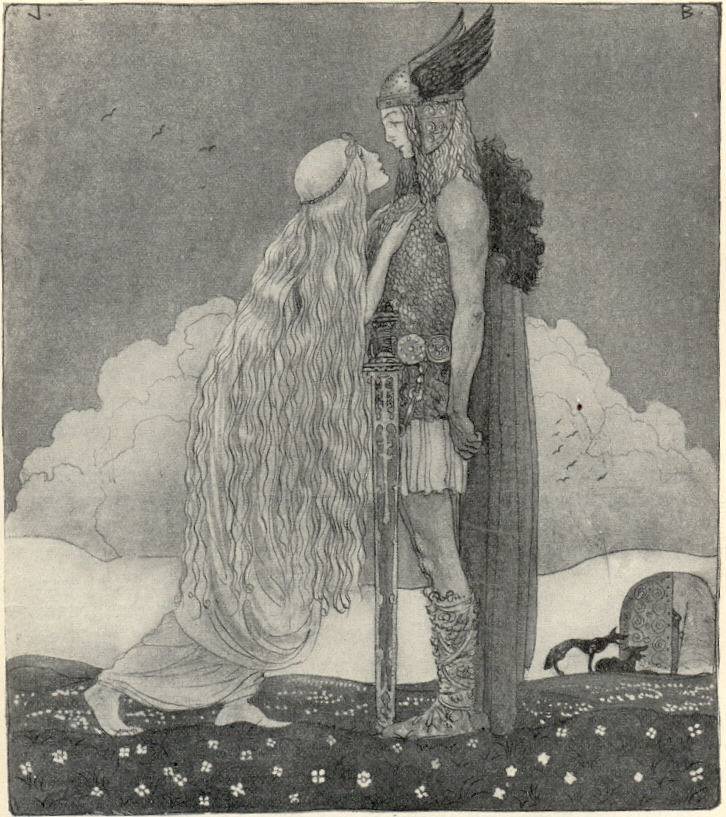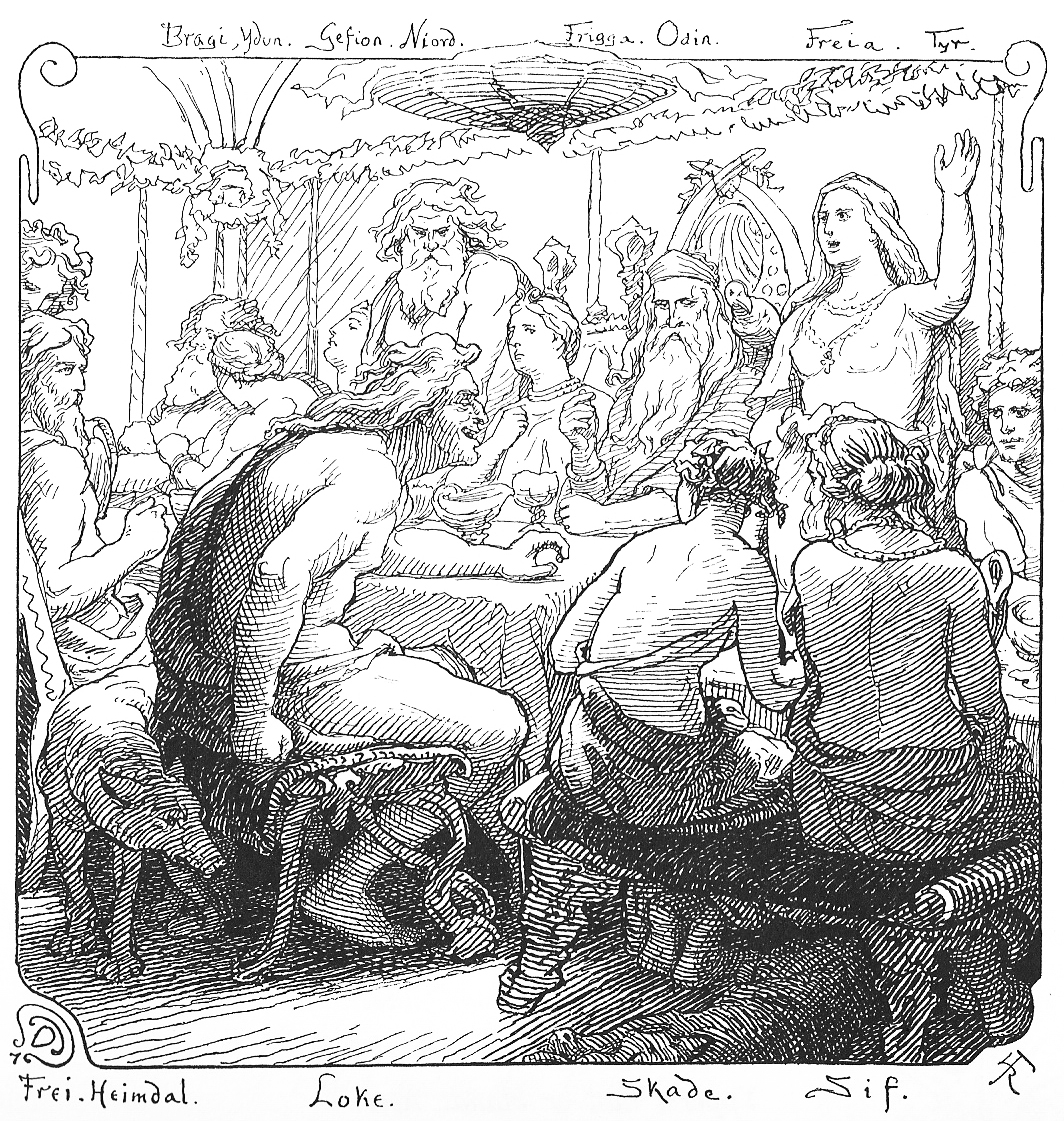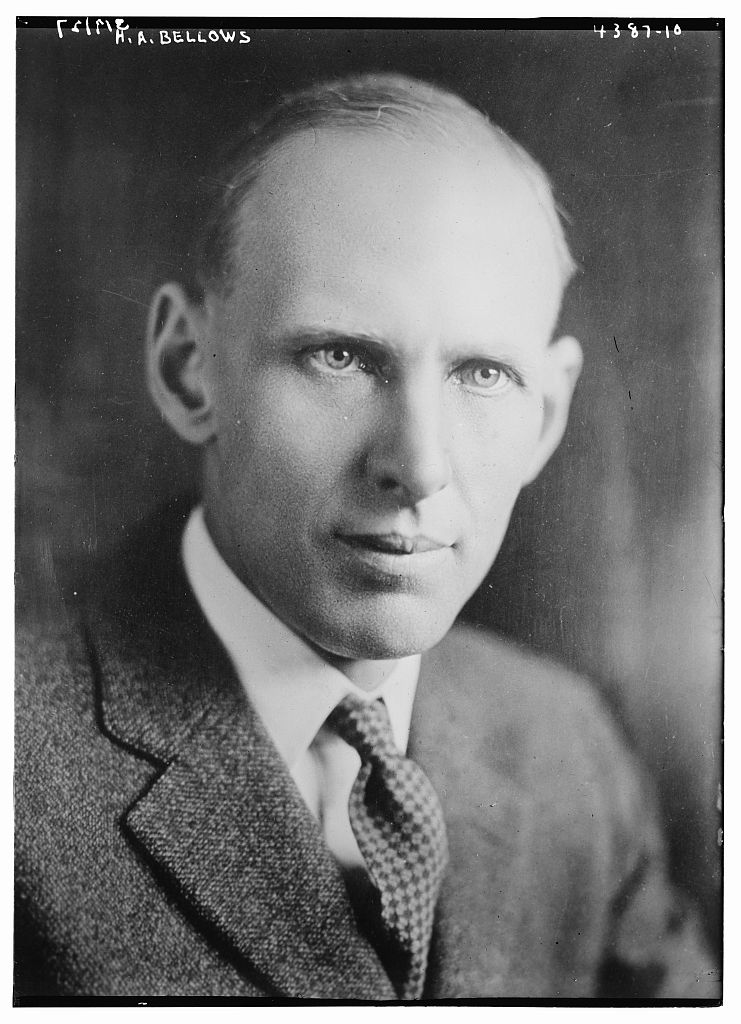|
Svipdagr
Svipdagr (Old Norse: "sudden day"Orchard (1997:157).) is the hero of the two Old Norse Eddaic poems Grógaldr and Fjölsvinnsmál, which are contained within the body of one work; Svipdagsmál. Plot Svipdagr is set a task by his stepmother, to meet the goddess Menglöð, who is his "fated bride." In order to accomplish this seemingly impossible task, he summons by necromancy the shade of his dead mother, Gróa, a völva who also appears in the ''Prose Edda'', to cast nine spells for him. This she does and the first poem abruptly ends. At the beginning of the second poem, Svipdagr arrives at Menglöð's castle, where he is interrogated in a game of riddles by the watchman, from whom he conceals his true name (identifying himself as Vindkald(r) "Wind-Cold" apparently hoping to pass himself off as a frost giant). The watchman is named Fjölsviðr, a name of Odin in Grímnismál 47. He is accompanied by his wolf-hounds Geri and Gifr. After a series of eighteen questions and answ ... [...More Info...] [...Related Items...] OR: [Wikipedia] [Google] [Baidu] |
Svipdagsmál
''Svipdagsmál'' (Old Norse: , 'The Lay of Svipdagr') is an Old Norse poem, sometimes included in modern editions of the ''Poetic Edda'', comprising two poems, '' The Spell of Gróa'' and '' The Lay of Fjölsviðr''. The two works are grouped since they have a common narrator, Svipdagr. Moreover, they would appear to have a common origin since they are closely similar in use of language, structure, style and metre (ljóðaháttr). These two poems are found in several 17th-century paper manuscripts. In at least three of these manuscripts, the poems are in reverse order and separated by a third Eddic poem titled '' Hyndluljóð''.McKinnell (2005:202). For a long time, the connection between the two poems was not realized, until in 1854 Svend Grundtvig pointed out a connection between the story told in ''Grógaldr'' and the first part of the medieval Scandinavian ballad of ''Ungen Sveidal''/''Herr Svedendal''/''Hertig Silfverdal'' (TSB A 45, DgF 70, SMB 18, NMB 22). Then in 185 ... [...More Info...] [...Related Items...] OR: [Wikipedia] [Google] [Baidu] |
Fjölsvinnsmál
''Fjölsvinnsmál'' (Old Norse: 'The Lay of Fjölsvinn') is the second of two Old Norse poems commonly published under the title '' Svipdagsmál'' "The Lay of Svipdagr". These poems are found together in several 17th-century paper manuscripts with ''Fjölsvinnsmál''. In at least three of these manuscripts, the poems appear in reverse order and are separated by a third eddic poem titled ''Hyndluljóð''. For a long time, the connection between the two poems was not realized, until in 1854 Svend Grundtvig pointed out a connection between the story told in ''Gróagaldr'' and the first part of the medieval Scandinavian ballad of ''Ungen Sveidal''/''Herr Svedendal''/''Hertig Silfverdal'' (TSB A 45, DgF 70, SMB 18, NMB 22). Then in 1856, Sophus Bugge noticed that the last part of the ballad corresponded to ''Fjölsvinnsmál''. Bugge wrote about this connection in ''Forhandlinger i Videnskabs-Selskabet i Christiania 1860'', calling the two poems together ''Svipdagsmál''. Subsequent ... [...More Info...] [...Related Items...] OR: [Wikipedia] [Google] [Baidu] |
Grógaldr
''Grógaldr'' or ''The Spell of Gróa'' is the first of two poems, now commonly published under the title '' Svipdagsmál'' found in several 17th-century paper manuscripts with ''Fjölsvinnsmál''. In at least three of these manuscripts, the poems are in reverse order and separated by a third eddic poem titled, ''Hyndluljóð''. For a long time, the connection between the two poems was not realized, until in 1854 Svend Grundtvig pointed out a connection between the story told in ''Gróagaldr'' and the first part of the medieval Scandinavian ballad of ''Ungen Sveidal''/''Herr Svedendal''/''Hertig Silfverdal'' (TSB A 45, DgF 70, SMB 18, NMB 22). Then in 1856, Sophus Bugge noticed that the last part of the ballad corresponded to ''Fjölsvinnsmál''. Bugge wrote about this connection in ''Forhandlinger i Videnskabs-Selskabet i Christiania 1860'', calling the two poems together ''Svipdagsmál''. Subsequent scholars have accepted this title. ''Grógaldr'' is one of six eddic poem ... [...More Info...] [...Related Items...] OR: [Wikipedia] [Google] [Baidu] |
Viktor Rydberg
Abraham Viktor Rydberg (; 18 December 182821 September 1895) was a Swedish writer and a member of the Swedish Academy, 1877–1895. "Primarily a classical idealist", Viktor Rydberg has been described as "Sweden's last Romantic" and by 1859 was "generally regarded in the first rank of Swedish novelists." Biography Viktor Rydberg was of humble parentage. One biographer notes that: "He had a hard struggle to satisfy the thirst for learning which was a leading passion of his life, but he finally attained distinction in several fields of scholarship." He was the son of a soldier turned prison guard, Johan Rydberg, and a midwife, Hedvig Düker. Viktor Rydberg had two brothers and three sisters. In 1834 his mother died during a cholera epidemic. Her death broke the spirit of his father, who yielded to hypochondria and alcoholism, contributing towards his loss of employment and the family's apartment, forcing authorities to board young Viktor out to a series of foster homes, one of w ... [...More Info...] [...Related Items...] OR: [Wikipedia] [Google] [Baidu] |
Undersökningar I Germanisk Mythologi
''Undersökningar i germanisk mythologi'' (''Investigations into Germanic Mythology'') is a two-volume work by Viktor Rydberg, published in 1886 and 1889. Henrik Schück wrote at the turn of the 20th century that he considered Rydberg the "last —and poetically most gifted —of the mythological school founded by Jacob Grimm and represented by such men as Adalbert Kuhn" which is "strongly synthetic" in its understanding of myth. Of this work, Jan de Vries said: At a time, when one was firmly convinced that the Old Norse myths were a late product, Rydberg’s voice resounds. At that time, he swam against the stream, but he clearly expressed that which has become an ever stronger certainty today: a large part of the myths of the Germanic tradition —and that is to say basically the Old Norse tradition—must be set back in a time when the undivided Proto-Indo-European people themselves created the vessel of their worldview in myths. Reception There is no shortage of scholarly ... [...More Info...] [...Related Items...] OR: [Wikipedia] [Google] [Baidu] |
Gróa
In Norse mythology, Gróa (possibly from Old Norse "growing"Orchard (1997:63).) is a völva (seeress) and practitioner of ''seiðr''. She is the wife of Aurvandil the Bold. Attestations ''Prose Edda'' Gróa appears in the ''Prose Edda'' book ''Skáldskaparmál'', in the context of Thor's battle with the jötunn Hrungnir. After Thor has dispatched Hrungnir with the hammer Mjollnir, Gróa is asked to help magically remove shards of Hrungnir's whetstone which became embedded in Thor's head. Unfortunately while Gróa was about her work, Thor distracted her by telling her of how he had earlier helped Aurvandil cross the river Élivágar, and had saved her husband's life by snapping off his frost-bitten toe. Gróa's spell miscarried and the pieces of whetstone remained permanently embedded in Thor's head. ''Poetic Edda'' Gróa is also a völva (or seeress), summoned from beyond the grave, in the Old Norse poem ''Grógaldr'', (a section of '' Svipdagsmál''), by her son Svipdagr. ... [...More Info...] [...Related Items...] OR: [Wikipedia] [Google] [Baidu] |
Freyja And Svipdag - John Bauer
In Norse paganism, Freyja (Old Norse "(the) Lady") is a goddess associated with love, beauty, fertility, sex, war, gold, and seiðr (magic for seeing and influencing the future). Freyja is the owner of the necklace Brísingamen, rides a chariot pulled by two cats, is accompanied by the boar Hildisvíni, and possesses a Feather cloak#Germanic, cloak of falcon feathers. By her husband Óðr, she is the mother of two daughters, Hnoss and Gersemi. Along with her twin brother Freyr, her father Njörðr, and her mother (Sister-wife of Njörðr, Njörðr's sister, unnamed in sources), she is a member of the Vanir. Stemming from Old Norse ''Freyja'', modern forms of the name include Freya, Freyia, and Freja. Freyja rules over her heavenly field, Fólkvangr, where she receives half of those who die in battle. The other half go to the god Odin's hall, Valhalla. Within Fólkvangr lies her hall, Sessrúmnir. Freyja assists other deities by allowing them to use her feathered cloak, is invok ... [...More Info...] [...Related Items...] OR: [Wikipedia] [Google] [Baidu] |
Hugo Gering
Hugo Gering (21 September 1847 – 3 February 1925) was a German philologist who specialized in Germanic studies. Biography Hugo Gering was born in Lipienica, Prussia on 21 September 1847. His father was a landowner. He was educated at Toruń and Chełmno. Since 1867, Gering studied philology, philosophy and history at the universities of Leipzig and Bonn. He served in the Prussian Army during the Franco-Prussian War. He subsequently gained his Ph.D. at the University of Halle under the supervision of Julius Zacher. His thesis was on the Gothic language. Gering completed his habilitation in German philology at Halle in 1876. After several scholarly trips to Scandinavia, Gering was appointed an associate professor at the University of Halle in 1883. Since 1889 he was a professor at the University of Kiel, where he served as Rector from 1902 to 1903. Gering specialized in the study of early Germanic literature, particularly Old English, Gothic and Old Norse literature. His p ... [...More Info...] [...Related Items...] OR: [Wikipedia] [Google] [Baidu] |
Freyja
In Norse paganism, Freyja (Old Norse "(the) Lady") is a goddess associated with love, beauty, fertility, sex, war, gold, and seiðr (magic for seeing and influencing the future). Freyja is the owner of the necklace Brísingamen, rides a chariot pulled by two cats, is accompanied by the boar Hildisvíni, and possesses a cloak of falcon feathers. By her husband Óðr, she is the mother of two daughters, Hnoss and Gersemi. Along with her twin brother Freyr, her father Njörðr, and her mother ( Njörðr's sister, unnamed in sources), she is a member of the Vanir. Stemming from Old Norse ''Freyja'', modern forms of the name include Freya, Freyia, and Freja. Freyja rules over her heavenly field, Fólkvangr, where she receives half of those who die in battle. The other half go to the god Odin's hall, Valhalla. Within Fólkvangr lies her hall, Sessrúmnir. Freyja assists other deities by allowing them to use her feathered cloak, is invoked in matters of fertility and love, and is fre ... [...More Info...] [...Related Items...] OR: [Wikipedia] [Google] [Baidu] |
Hjalmar Falk
Peterolsen Groth Hjalmar Seierstedt Falk (April 2, 1859 – November 2, 1928) was a Norwegian linguist and philologist. Early life and education Falk was born in Vang. He started his university studies in 1876 and graduated with an education degree in languages and history in 1882. After this he taught in Oslo while continuing research, especially on Germanic languages and Nordic mythology, including scholarship stays in Germany and England. Falk received the Crown Prince Gold Medal in 1885 and was appointed a |
Otto Höfler
Otto Eduard Gotfried Ernst Höfler (10 May 1901 – 25 August 1987) was an Austrian philologist who specialized in Germanic studies. A student of Rudolf Much, Höfler was Professor and Chair of German Language and Old German Literature at the University of Vienna. Höfler was also a Nazi from 1922 and a member of the SS Ahnenerbe before the Second World War. Höfler was a close friend of Georges Dumézil and Stig Wikander, with whom he worked closely on developing studies on Indo-European society. He tutored a significant number of future prominent scholars at Vienna, and was the author of works on early Germanic culture. refers to him as "perhaps most famous and probably most controversial representative" of the "Vienna School" of Germanic studies founded by Much. Early life and education Otto Höfler was born in Vienna on 10 May 1901 to a highly educated upper middle class family. His father, Alois Höfler, was Professor of Philosophy and Pedagogy at the University of Vienna. ... [...More Info...] [...Related Items...] OR: [Wikipedia] [Google] [Baidu] |
Henry Adams Bellows (businessman)
Henry Adams Bellows (September 22, 1885 – December 29, 1939) was a newspaper editor and radio executive who was an early member of the U.S. Federal Communications Commission. He is also known for his translation of the ''Poetic Edda'' for The American-Scandinavian Foundation. Life and career Born in Portland, Maine, Bellows graduated from Harvard University in 1906, and then taught English as an assistant there for three years. He received his Ph.D. in 1910 for a dissertation in comparative literature entitled ''The Relations between Prose and Metrical Composition in Old Norse Literature'' and then became an assistant professor of rhetoric at the University of Minnesota.William M. Emery, ''The Howland Heirs: Being the Story of a Family and a Fortune and the Inheritance of a Trust Established for Mrs. Hetty H.R. Green'', Bedford, Massachusetts: Anthony, 1919p. 333 From 1912 to 1919 he was managing editor of ''The Bellman'', a Minneapolis literary magazine, vice president of t ... [...More Info...] [...Related Items...] OR: [Wikipedia] [Google] [Baidu] |




.jpg)
